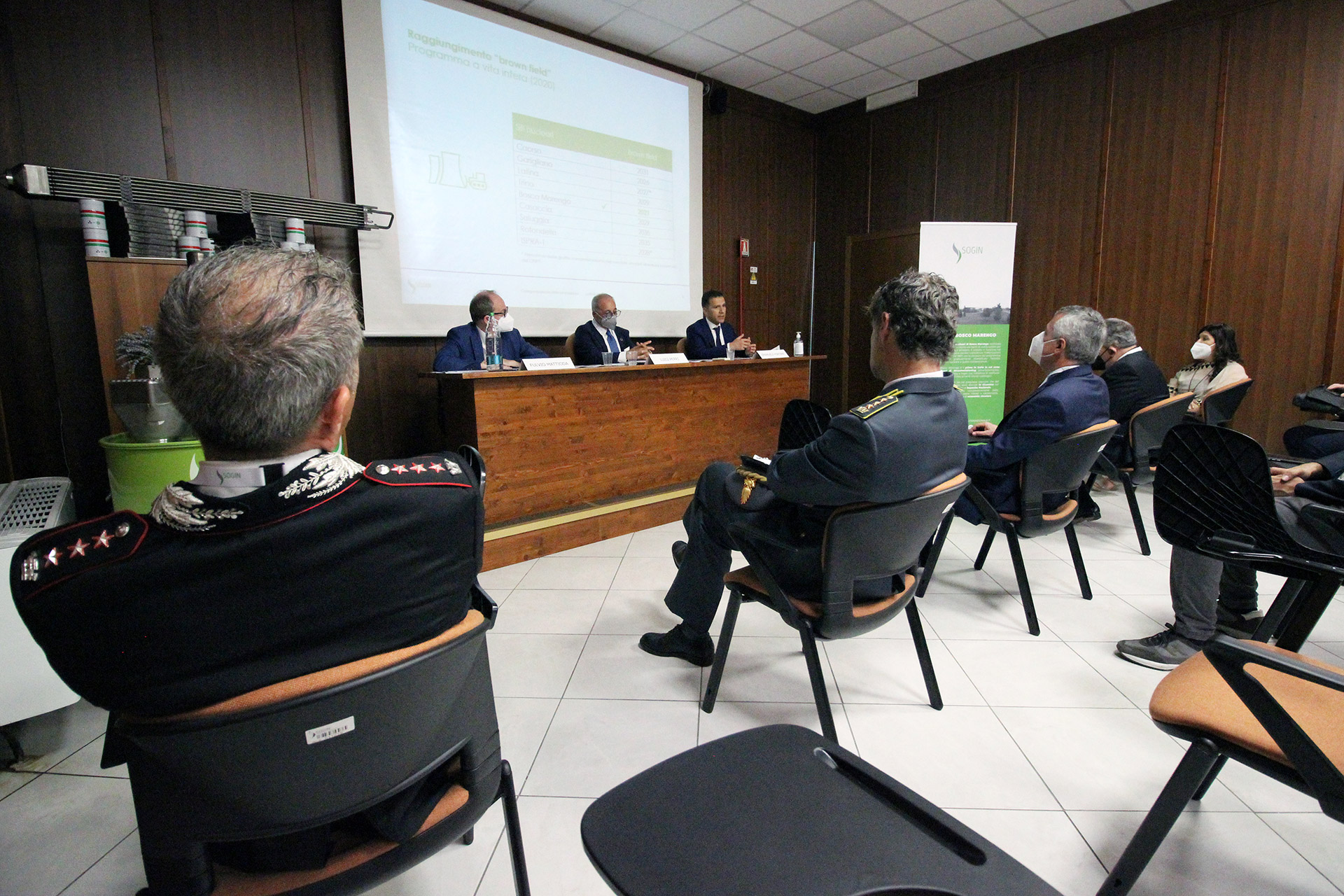Sogin completed the decommissioning of the FN plant in Bosco Marengo
15 June 2022
Today, welcomed by the Company's Chairman and CEO, local and monitoring authorities visited the Piemonte site where Sogin completed its decommissioning operations.
This morning the Mayor of Bosco Marengo, Gianfranco Gazzaniga, the Prefect of Alessandria, Francesco Zito, and representatives of the Police, visited the FN plant in Bosco Marengo, accompanied by Sogin's Chairman Luigi Perri and CEO Emanuele Fontani.

The site, employed to manufacture nuclear fuel during operation, is the first Italian plant where Sogin's decommissioning activities envisaged in Phase 1 have been completed, reaching the so-called brownfield status. This goal was achieved through significant acceleration in 2021, equalling about 16% of decommissioning activities.
This milestone made it possible to remove radiological constraints and declassify the areas and buildings where nuclear fuel elements were previously manufactured to restore them to conventional environments.
The main activities carried out involved the decontamination and dismantling of the fuel element production cycle, the plant's core business during its operation. Sogin dismantled ancillary systems such as the ventilation plant, decontamination tank and liquid effluent treatment and drainage plant.
In addition, any solid and liquid radioactive waste stored on the premise underwent treatment and was reduced in volume.
The plant hosts about 500 cubic meters of radioactive waste deriving from the plant's past operations and subsequent decommissioning activities. This waste is safely stored in the B106 temporary storage facility, adapted to the latest standards, pending its transfer to the National Repository.
The next activities will concern the safe storage and management of radioactive waste and work on the part of the site's 'buffer zone' to finalise characterisation and remediation procedures. Radiological characterisation measures will require great care and accuracy. The site also hosts a small amount of radioactive waste with a low contamination level (a few tens of kilos), consisting of inert materials like plastic, iron, cement, wood, oil drums, etc., buried in the past during the plant's operation. This material will be removed and landfilled after running adequate controls.
As soon as the National Repository is ready for use, the radioactive waste will be removed, the temporary deposit dismantled, and the site will return to the green field status (free of radiological constraints and destined for other uses).
Sustainability has underpinned all Sogin's activities since its foundation. In line with this principle, as part of a project to protect the artistic heritage promoted by the Ministry of Culture under the National Recovery and Resilience Plan (NRRP), the company offered some buildings across its decommissioned plants (i.e., Bosco Marengo Caorso and Garigliano) to safeguard Italy's works of art in the event of natural disasters).
«I thank Sogin for the invitation», said Bosco Marengo Mayor Gianfranco Gazzaniga. «I am highly pleased by Sogin's completion of the decommissioning of the Bosco Marengo site. To complete its brownfield status, we must only wait for the final transport of radioactive waste to the National Repository. As Mayor, I would like to thank Sogin for correctly complying with the regulations and legal requirements to ensure that the Bosco Marengo site was reclaimed and made safe. My appreciation also goes to» the Mayor concluded, «their ability to be sensitive to local and territorial needs over the years».
«I would like to thank all the staff», said Sogin's CEO, Emanuele Fontani, «who have worked with commitment over the years, and the Authorities and Bodies who, in various capacities, authorised and accompanied all the phases of a complex work designed to free the site from radiological constraints. This result», Fontani continued, « further speeds up the decommissioning plan of Italian nuclear plants by always keeping the safety of workers and communities living near our sites and protecting the environment in the first place».